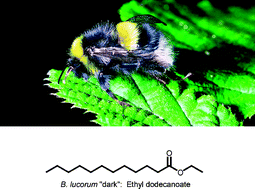Chemical communication by behaviour-guiding olfactory signals
Abstract
Chemical Ecology is a new interdisciplinary research area with close collaborations between chemists and biologists of different descriptions. It has developed during the last 40 years because of an interest in the structure, function and evolution of chemical signalling among organisms and also because of the hope to be able to use the ubiquitous phenomenon to control organisms, like pest insects. This feature article highlights the growth of the discipline and the progress made, through examples from the author's own work on chemical communication in insects and flowering plants. The research deals with olfactory signals, i.e. volatile chemical compounds perceived by the


 Please wait while we load your content...
Please wait while we load your content...